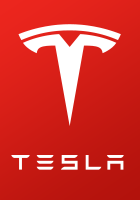My employer is looking into installing a couple chargers in the parking lot as an incentive to get an EV car. As of right now, I am the only owner of one.
I told them that Tesla will cover the cost of installation and parts, but they want to install chargers that will work with other cars.
Does anybody else’s employer have any non-Tesla chargers or any other recommendations?
I told them that Tesla will cover the cost of installation and parts, but they want to install chargers that will work with other cars.
Does anybody else’s employer have any non-Tesla chargers or any other recommendations?


